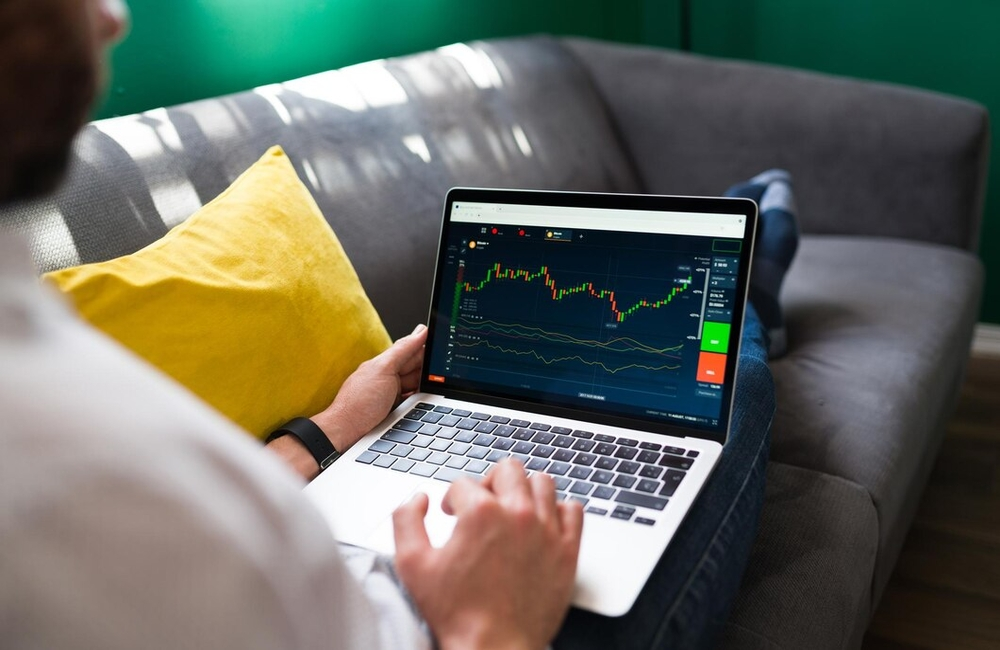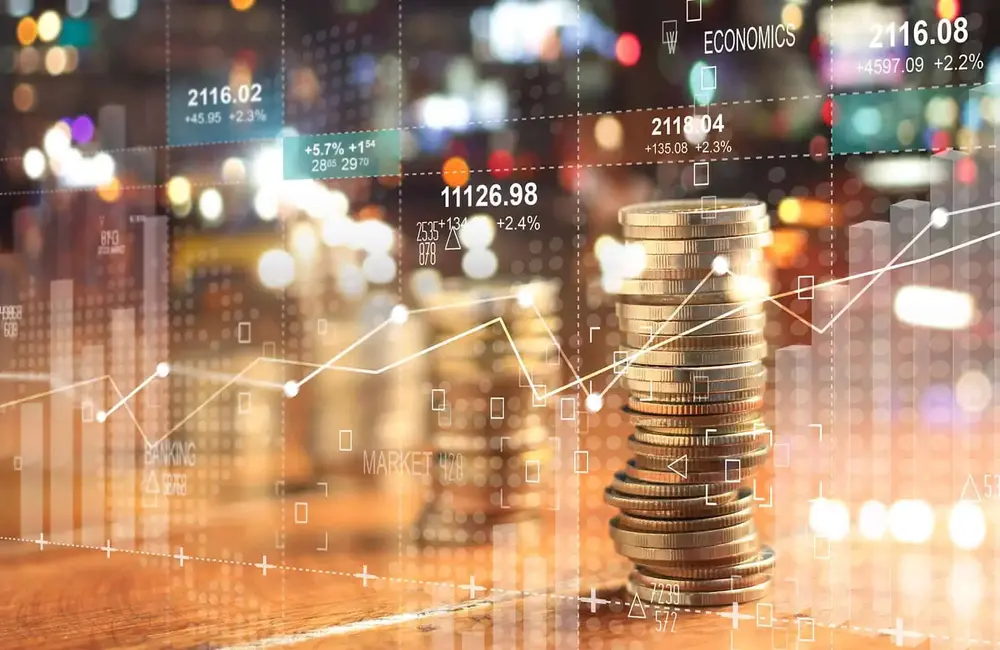ASX futures were 9 points or 0.1% lower at 7048 at 8.00 am on Friday, indicating slight weakness at the open.
The S&P 500, the benchmark index, fell 0.6 percent, approaching bear-market territory market jargon for a 20 percent drop from a recent peak. The Dow Jones Industrial Average slid 0.8%. Both indexes finished at their lowest level since March 2021. The loss for the Nasdaq Composite Index, which fell into bear-market territory earlier this year, was held back by a 2.5 percent dip at Apple, down 0.3 percent.
What US consumers are facing, and pitching the economy toward a recession, has been captured in earnings reports from some of America’s biggest retailers in recent days that show the fastest inflation in four decades catching up with them. Investors were already dealing with the end of an era of easy monetary policy that fueled strong gains for stocks and other riskier assets. Those forces have contributed to steep losses for stocks and some corporate bonds recently, and many investors expect volatility to persist.
“The price action indicates that it isn’t over yet,” said Philip Saunders, a portfolio manager at Ninety One, an asset manager with offices in the U.K. and South Africa.
The S&P/ASX 200 locally finished 1.65% weaker at 7064.5 on Thursday as broad-based selling erased its gains for the week. Consumer, tech and financial stocks weighed most heavily as the benchmark index took its cue from the Dow Jones Industrial Average and S&P 500, both of which posted their largest percentage losses since June 2020.
Target Australia owner Wesfarmers dropped 7.8% to a one-and-a-half year trough of $45.89, while JB Hi-Fi tumbled 6.6% to a five-month low of $44.89 and Harvey Norman lost 5.5% to an almost two-year low of $4.33.
Banking giants Commonwealth, NAB, ANZ and Westpac lost between 0.95%-4.05%, while travel and retail shares were also hit by inflation concerns.
Health was the sole useful one of the ASX 200’s 11 sectors, nudging up 0.1%.
In energy shares, Woodside Petroleum fell 2.8% to $29.89 after shareholders voted overwhelmingly to approve the oil-and-gas company's $41 billion merger with BHP Petroleum at Woodside's annual general meeting in Perth. They also supported changing the name to Woodside Energy.
The ASX 200, which was on a four-session winning streak, is down 0.15% so far this week. In commodities, Brent crude oil inched up 2.7% to US$112.04 a barrel. Iron ore rose 0.9 per cent to US$126.35. Gold eased $1 to US$1846.60.
Bonds also posted gains as a sense of risk appetite in markets ebbed. The yield on the Australian 2 Year government bond fell to 2.50%, while the 10 Year bond moved lower to 3.38%. Overseas, US Treasury 2 Year yield closed down at 2.61% and 10 Year dipped to 2.84%. Yields fall as prices rise.
The Australian dollar also gained on indications China’s lockdown may soon be over, buying 70.46 US cents at 7.00 am on Friday, greater than the previous closing price of 69.52 US cents. The Wall Street Journal Dollar Index, which measures the US dollar against 16 other currencies, dipped to 95.36.
Asia
China stocks finished flat, though ticked higher, as those range-bound movements have dominated the week thus far. The benchmark Shanghai Composite Index increased 0.4% to close at 3096.96, while the Shenzhen Composite Index finished 0.6% higher at 1952.70. The ChiNext Price Index added 0.5% to 2377.13. The market was bolstered by surging momentum in the renewable-energy space, after the European Union overnight released a new plan to speed up the region’s green-energy transition. Gains were led by Chinese makers of solar-power equipment, suppliers of wind turbines and renewable-energy materials.
Hong Kong’s Hang Seng Index lost 2.5 percent to 20120.68 with declines in technology stocks. Hong Kong-listed shares were likely pressured by profit taking after Chinese tech stocks plunged in US American depositary receipt market last night, KGI Research analysts said in a commentary. The Hang Seng Tech Index was down 3.98% at 4090.72. The technology sector was among the worst performers, with Alibaba Group (9988.HK) falling 7.4% and Tencent Holdings (0700.HK) dropping 6.5%, after it posted its largest quarterly profit slump since its Hong Kong listing. Xinyi Solar Holdings was among gainers, adding 1.7%.
Japanese stocks close down with electronics and tech stocks leading declines as cost inflation remains a concern for market participants. Medical-equipment maker Sysmex loses 6.0% and NTT Data sheds 4.3%. The Nikkei Stock Average declines 1.9% to 26402.84. Investors are looking for moves in yen, crude-oil prices and news flow on China’s Covid-19 lockdowns.
Europe
European stocks declined as a negative morning in New York added to a selloff fed by concerns of an economic slowdown. The pan-European Stoxx Europe 600 lost 1.4 percent, the French CAC 40 slipped 1.3 percent, the German DAX was down 0.9 percent.
“The sea of red gets deeper by the day, as the reversal that began so dramatically yesterday begins to pick up steam,” says IG analyst Chris Beauchamp. “The rebound from earlier in the week is a distant memory. Fears about growth return to the fore and investors once again sell any bounce as they worry about a recession in the U.S. and beyond.”
London’s FTSE 100 finished down 1.8 percent Thursday, and retail companies had a rough day. Royal Mail, the biggest dropper, closed down 12 percent after it slid to a pretax profit decline for fiscal 2022.
“Much of today’s pain is being felt by UK retailers after downgrades earlier this week from US retail behemoths Target and Walmart, while US department store Kohl’s this today joined in by warning of the impact that higher costs are having on their margins and ultimately their profits,” says CMC Markets UK chief market analyst Michael Hewson. “We’re also seeing some pain at Unilever and Reckitt Benckiser as the margin worries linger as consumers are squeezed by a cost of living crisis.”
North America
Stocks in the United States and bond yields fell, with the S&P 500 Index toeing a bear market, as persistent anxiety among investors about the health of the economy stretched a recent sell-off.
The large indexes fell in early Thursday trading, a day after dropping 4 percent, before regaining some ground. They ended up lower, however, with all three headed for weekly losses of at least 2.9%. Concerns about consumer spending, which pushed the market up from pandemic lows, have put pressure on stocks and bond yields.
The S&P 500 fell 0.6 percent, and got perilously close to bear market territory the term the market uses for a 20 percent drop from a recent peak. The Dow Jones Industrial Average dropped 0.8%. Both indexes ended at their lowest since March 2021. The Nasdaq Composite Index, which also entered bear-market territory earlier this year, slipped 0.3%, with Apple down 2.5%.
Investors purchased government bonds, considered a haven asset during periods of economic uncertainty. The yield on 10-year Treasury notes dipped to 2.854% from 2.884% on Wednesday, slumping for seven of the last nine sessions. Bond yields and prices are inversely related.
Recent earnings reports from some of America’s biggest retailers have contributed to fears that the highest level of inflation in four decades is taking a toll on US consumers and pushing the economy toward a recession. Investors were already struggling with an end to an era of easy monetary policy that propelled big gains for stock and other riskier assets. These developments have recently contributed to sharp losses for stocks and some corporate bonds, and many investors expect the volatility to continue.
“The price action indicates it’s not done yet,” said Philip Saunders, a portfolio manager at Ninety One, an asset manager in the United Kingdom and South Africa.
Shares of Kohl’s rose $1.91, or 4.4 percent, to $45.04, after executives said that suitors were still interested in buying the company, added that sales had weakened in April, becoming the latest retailer to call out inflationary pressures on demand. Walmart and Target this week reported that higher costs shrank profits in the most recent quarter, prompting a selloff of their shares that spread through the broader market.
Cisco Systems plunged $6.64, or 14 percent, to $41.72 after the communication-equipment manufacturer fell short of analysts’ expectations for its quarterly results. Gasoline sales helped drive revenue and profit higher in the first quarter, BJ’s Wholesale Club reported, sending shares up more than $3.97, or 7.4%, to $57.39.
In economic news, the Labor Department said new claims for unemployment benefits increased for a third straight week. (Initial jobless claims, a measure of layoffs, are historically low.) In separate data, US home prices hit a record in April, but the number of sales slipped.
Anthony Saglimbene, global markets strategist at Ameriprise Financial, said that economic data indicates strong consumer spend on goods, easing recession fears.
“If consumers are really going to cut back on spending, then they need to be at least afraid that they’re going to lose their jobs and that’s just not the environment we’re in,” Mr. Saglimbene said.
Others believe that a slowdown in consumer spending could reduce the need for the Federal Reserve to raise interest rates as forcefully to cool consumer demand.
“That some slowdown in discretionary spending will help organically or naturally alleviate the production-side bottlenecks,” said Seth Wunder, chief investment officer of Acorns. “At the end of the day, that is one of the biggest inputs to the inflationary problems that we are dealing with.”
The war in Ukraine is adding to the inflationary strains that led the Fed to start a series of interest-rate increases and to scale back its bond holdings. And Covid-19 shutdowns in China have caused a sharp slowdown in the world’s second-biggest economy. Investors believe that higher interest rates going forward will also bring return expectations among investors back to normal.
“We’re in a reassessment, or recalibration period, and that’s good,” said Todd Lowenstein, chief equity strategist of The Private Bank at Union Bank. “It’s going to hurt in the short run, but sometimes you need pain in the short run to retrain behavior.”
The S&P 500 last fell into a bear market during the pandemic panic in March 2020. It lasted a short while, and then the market went on a two-year tear that culminated this Jan. 3. The Dow industrials, which are weighted more toward old-line industrial companies and banking stocks, have fallen less badly and are still some distance from bear market territory.
“Add tightening of monetary policy into the mix, and we have a recipe for volatility and investor unease,” said Clara Cheong, a global market strategist at J.P. Morgan Asset Management.
In cryptocurrency markets, bitcoin rose 3.2% from its 5 pm New York on Wednesday to $30,138.

























